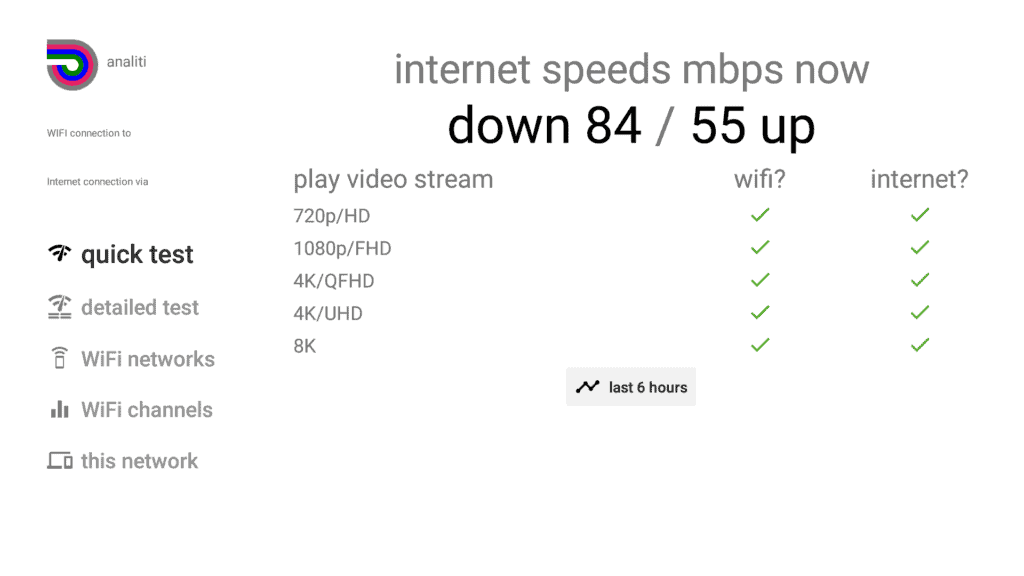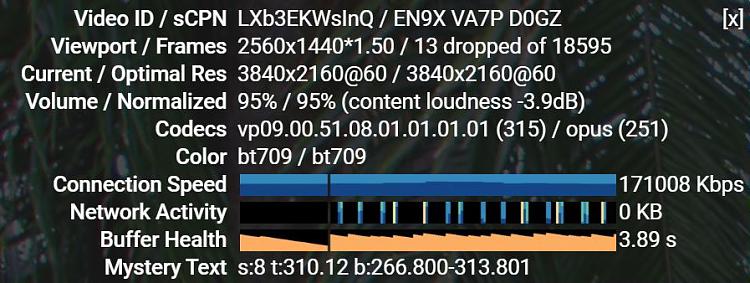
Rendering 4k video, whether 360-degrees or not, is incredibly processor-intensive. For example, Samsung recommends these specs for editing 360 4k video:
4K UHD is a resolution of 3840 pixels × 2160 lines (8.3 megapixels, aspect ratio 16:9) and is one of the two resolutions of ultra high definition television. An Internet speed of 100 Mbps would be the absolute minimum for 4K videogaming content with a dual-GPU setup. The latest graphics cards can help you attain 60 fps in most modern PC games that demand a lot of resources, but a dual-GPU setup is the ticket to reaching that frame rate consistently. Q What is 4K random read speed? A A measure of how quickly multiple small files can be read from a device. 4K random read is a disk access pattern whereby small (4K) blocks of data are read from random locations on the surface of the device being tested at a queue depth of one. High bit rate HDR Demo. Produced by ESO. HDR and Music by JAG.LinkMusicWe. If it is used appropriately, the 4K describes a resolution of 4096 X 2160 pixels, a resolution used mostly in digital cinemas. The UHD, on the other hand, describes a resolution of 3840 X 2160 and you can find it in TVs (16:9 ratio TVs) and is what you can actually take home. You can check our UHD demo trailers in full 4K video test.
– Processor: Intel Core i7 or AMD FX or faster
– Graphics card: ATI / AMD: Radeon HD R5 series or above; NVIDIA: GeForcce GTS / GT series or above; Intel HD Graphics 5500 or above; 2 GB DDR RAM or above
– RAM: 6 GB or above
At the time of this writing, a computer with specs like these is not cheap. Videomaker's recommended PC build for a 4k editing PC costs about $4,000 as of February 2016.
But what if you could get pretty fast rendering speeds for a fraction of the cost?
I was slogging through with my laptop (i5-2450M, 8GB RAM, Intel HD Graphics 3000), taking as long as 8 minutes to render just 15 seconds of 4k 360 video. Then I met Hammad Iqbal on Facebook, who told me about a fast but very inexpensive PC.
In the tech world, 'fast' and 'inexpensive' are usually mutually exclusive and the figures he gave me sounded to good to be true, but I thought it was worth a shot. I got a PC with very similar specs to the one he suggested, and here are the results:
Indeed it was true: an old Dell Precision T3500 workstation (circa 2009) with a Xeon processor could render 4k video at very fast speeds — 12x faster than my laptop, and on eBay these old workstations are selling for only about $250!
The one I got had these specs:



Rendering 4k video, whether 360-degrees or not, is incredibly processor-intensive. For example, Samsung recommends these specs for editing 360 4k video:
4K UHD is a resolution of 3840 pixels × 2160 lines (8.3 megapixels, aspect ratio 16:9) and is one of the two resolutions of ultra high definition television. An Internet speed of 100 Mbps would be the absolute minimum for 4K videogaming content with a dual-GPU setup. The latest graphics cards can help you attain 60 fps in most modern PC games that demand a lot of resources, but a dual-GPU setup is the ticket to reaching that frame rate consistently. Q What is 4K random read speed? A A measure of how quickly multiple small files can be read from a device. 4K random read is a disk access pattern whereby small (4K) blocks of data are read from random locations on the surface of the device being tested at a queue depth of one. High bit rate HDR Demo. Produced by ESO. HDR and Music by JAG.LinkMusicWe. If it is used appropriately, the 4K describes a resolution of 4096 X 2160 pixels, a resolution used mostly in digital cinemas. The UHD, on the other hand, describes a resolution of 3840 X 2160 and you can find it in TVs (16:9 ratio TVs) and is what you can actually take home. You can check our UHD demo trailers in full 4K video test.
– Processor: Intel Core i7 or AMD FX or faster
– Graphics card: ATI / AMD: Radeon HD R5 series or above; NVIDIA: GeForcce GTS / GT series or above; Intel HD Graphics 5500 or above; 2 GB DDR RAM or above
– RAM: 6 GB or above
At the time of this writing, a computer with specs like these is not cheap. Videomaker's recommended PC build for a 4k editing PC costs about $4,000 as of February 2016.
But what if you could get pretty fast rendering speeds for a fraction of the cost?
I was slogging through with my laptop (i5-2450M, 8GB RAM, Intel HD Graphics 3000), taking as long as 8 minutes to render just 15 seconds of 4k 360 video. Then I met Hammad Iqbal on Facebook, who told me about a fast but very inexpensive PC.
In the tech world, 'fast' and 'inexpensive' are usually mutually exclusive and the figures he gave me sounded to good to be true, but I thought it was worth a shot. I got a PC with very similar specs to the one he suggested, and here are the results:
Indeed it was true: an old Dell Precision T3500 workstation (circa 2009) with a Xeon processor could render 4k video at very fast speeds — 12x faster than my laptop, and on eBay these old workstations are selling for only about $250!
The one I got had these specs:
Dell Precision T3500
Intel Xeon Quad Core 3.20GHz W3565
15GB RAM
Hard Drive: 600GB
Graphics card: Radeon X300 (an old graphics card)
pre-installed with Windows 10 Pro
As shown in the video, it could render 360 4k video (3840 x 1920) at around 2.5 seconds per second of video!
Just be aware that workstations have more limited compatibility compared to a regular desktop, and because this one is quite old, it may be hard to find the right drivers to work with Windows 10. In fact, in my case, the desktop I got doesn't have a Windows 10 driver for its graphics card, so I can't stitch 360 photos or videos on Action Director. I plan to buy a newer graphics card that has a Windows 10 driver, such as the GeForce GTX 750 Ti which is reportedly compatible with the T3500, or possibly the Radeon RX 480 if it is compatible, so that I can reuse it in the future when I want to upgrade to a VR-ready PC.
Internet Speed For 4k
Thanks again to Hammad for this awesome tip!

